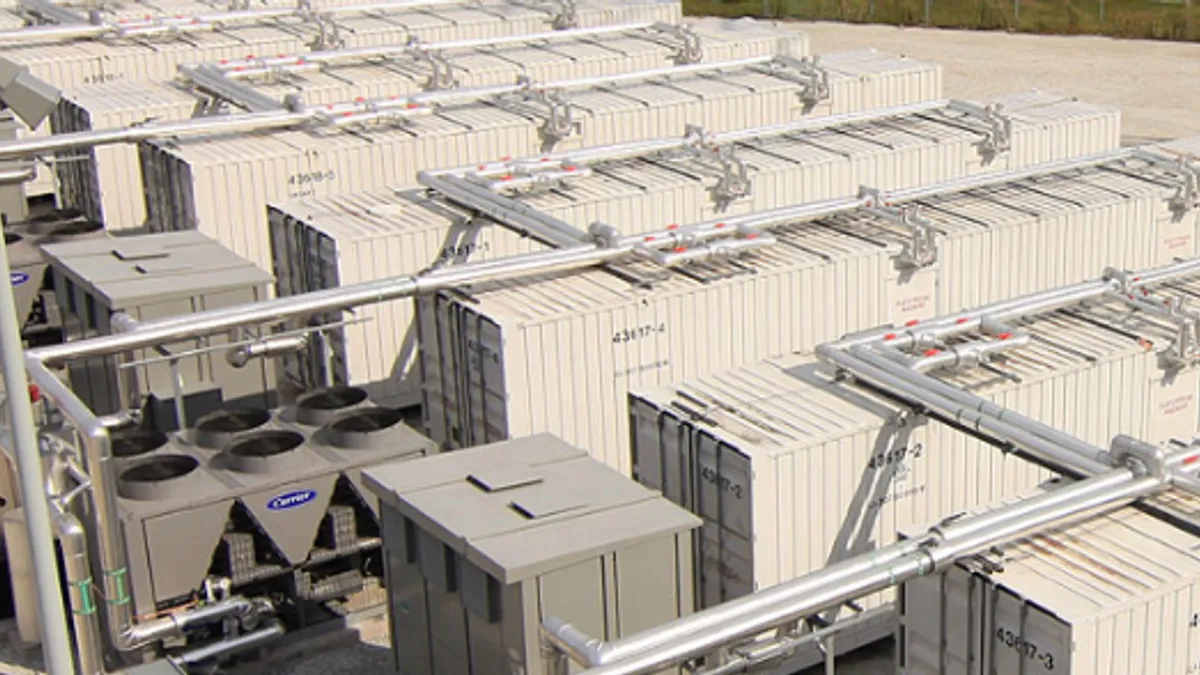Dive Brief:
-
Consolidated Edison has filed a proposal with the New York Public Service Commission for a front-of-the-meter demonstration energy storage project that would set in place a new business model to support larger projects.
-
The project, with microgrid developer GI Energy, would be at four sites and be part of the state’s Reforming the Energy Vision (REV) filing before the PSC.
- The project would involve a new business model that would pay customers for hosting batteries through leases.
Dive Insight:
ConEd’s pilot business model is designed to spare customers the confusion of navigating complex wholesale markets to make money from a battery.
"This business model increases the market size for customer-sited solutions, aligns utility need with battery dispatch, and enables larger systems which can capture economies of scale," the utility wrote in its proposal.
The model is designed to eliminate barriers for customers who would otherwise would have to navigate complex tariff schedules from traditional behind-the-meter projects, the utility noted.
Con Edison’s proposal calls for the storage facility to be located in front of the meter. GI Energy, ConEd’s partner in the project, is responsible for securing financing for the project costs, while ConEd pays a quarterly fee to cover the developer’s costs. The utility, meanwhile, garners the revenues from dispatching the battery into the wholesale market in conjunction with GI Energy, which retains some dispatch rights to the facility. The host customer receives a flat quarterly lease payment for housing the battery.
In another REV project called the Brooklyn-Queens Neighborhood Program, ConEd is installing a microgrid project that combines a battery, fuel cell and solar PV facility at Brooklyn's Marcus Garvey apartments. The project is designed to provide local load relief on a stressed grid feeder using a 300-kW, 1,200-kWh lithium-ion battery system, 400-kW of solar PV and a 400-kW fuel cell.
The Brooklyn-Queens project is an alternative to a costly infrastructure upgrade to a substation, underpinning REV's goal of enticing utilities to choose non-wires alternatives, aligning utility earnings with energy and climate goals.













